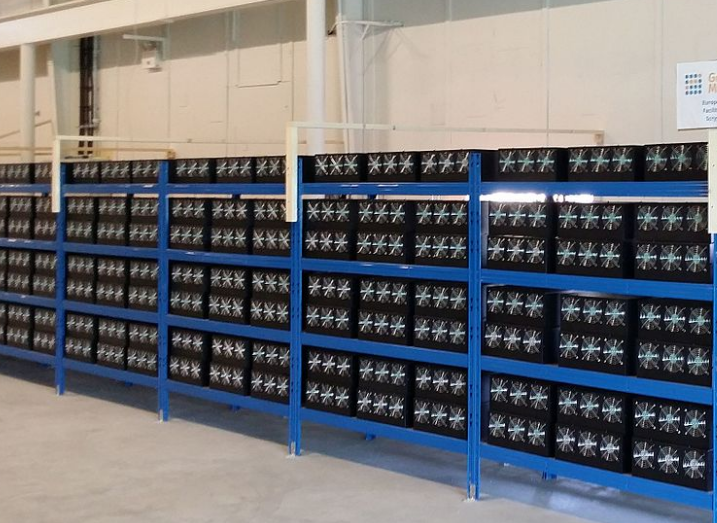Bitcoin mining giant CleanSpark just scored a massive $100 million credit line backed by its own Bitcoin stash, teaming up with lender Two Prime. This move boosts the company’s borrowing power without selling shares or crypto, sparking questions about how miners are reshaping finance. What’s next for CleanSpark’s growth push?
Inside the New Credit Deal
CleanSpark, a key player in U.S. Bitcoin mining, revealed this fresh $100 million credit facility on September 25. The deal with Two Prime lets the company use its Bitcoin holdings as collateral, avoiding the need to dilute stock or offload assets. This pushes CleanSpark’s total collateralized lending capacity to $400 million, marking a big step in its funding strategy.
The credit line comes hot on the heels of another $100 million deal with Coinbase Prime just days earlier. Together, these facilities give CleanSpark flexible cash for expanding operations. Company leaders say the funds will support Bitcoin mining, high-performance computing, and energy projects. With Bitcoin prices fluctuating, this setup helps miners like CleanSpark borrow at lower costs, around 7.7% interest based on recent reports.
Why does this matter? It shows how crypto firms are tapping traditional finance tools while keeping their digital assets intact. CleanSpark’s approach could set a trend for others in the industry facing high energy costs and market swings.
How This Boosts CleanSpark’s Growth
CleanSpark plans to pour the new funds into building more data centers and ramping up computing power. The company already runs sites across the U.S., focusing on sustainable energy sources like solar and wind to power its rigs. This credit line avoids the pitfalls of share sales, which have hurt stock prices for some miners in the past.
Take a look at CleanSpark’s recent moves:
- Expanded mining capacity to over 20 exahash per second in recent months.
- Acquired new sites in states like Georgia and Tennessee for better efficiency.
- Shifted toward high-performance computing, blending Bitcoin mining with AI data processing.
By using Bitcoin as collateral, CleanSpark keeps full control of its treasury while unlocking cash for these projects. Investors watched the stock dip slightly after the announcement, down about 5% in trading, but analysts see long-term upside. The firm reported holding thousands of Bitcoins, valued at hundreds of millions, giving it strong backing for loans.
This isn’t just about mining more coins. CleanSpark aims to diversify into tech services, turning mining farms into hubs for cloud computing. That could mean steadier income beyond volatile crypto markets.
One key stat stands out. According to industry data from The Miner Mag in 2025, Bitcoin-backed loans have surged 30% this year, helping firms like CleanSpark avoid dilution. It’s a smart play in a sector where halving events cut mining rewards every four years.
What It Means for the Bitcoin Mining World
The broader Bitcoin mining scene is heating up with deals like this. Miners face tough challenges, from rising electricity bills to stricter regulations on energy use. CleanSpark’s strategy highlights a shift toward using crypto as loan collateral, much like how homeowners use property for mortgages.
Compare it to rivals. Firms like Marathon Digital have also secured similar credit lines, but CleanSpark’s back-to-back deals stand out. This could pressure smaller players to follow suit or risk falling behind in the race for efficiency.
Here’s a quick breakdown of recent miner funding trends:
| Miner | Credit Amount | Lender | Date |
|---|---|---|---|
| CleanSpark | $100M | Two Prime | Sept 2025 |
| CleanSpark | $100M | Coinbase Prime | Sept 2025 |
| Marathon Digital | $200M | Various | July 2025 |
This table shows how miners are leaning on Bitcoin loans to scale up without tapping equity markets. Experts from CoinJournal note that such facilities now total over $1 billion industry-wide, based on 2025 reports. It’s a sign of maturing crypto finance, blending blockchain with Wall Street tools.
But risks remain. If Bitcoin prices crash, collateral values drop, potentially triggering loan calls. CleanSpark mitigates this with conservative borrowing ratios, ensuring it doesn’t overextend.
Challenges and Future Outlook
Not everything is smooth sailing. CleanSpark’s stock slipped after the news, as some investors worry about added debt in a high-interest environment. The company must balance growth with profitability, especially as global Bitcoin mining competition intensifies from players in China and Europe.
Still, the firm’s focus on clean energy gives it an edge. A 2025 study by the Bitcoin Mining Council found that over 50% of U.S. mining now uses renewable sources, up from 40% in 2024. CleanSpark leads here, with plans to hit 100% sustainable power by 2026.
This credit facility could help achieve that. By funding expansions without selling Bitcoin, CleanSpark positions itself for the next bull run. Analysts predict Bitcoin could top $100,000 by year-end, boosting miner revenues.
One surprise? These loans often come with flexible terms, allowing draws as needed. That means CleanSpark can time investments with market highs, a counterintuitive edge in a unpredictable field.
As Bitcoin mining evolves, deals like CleanSpark’s $100 million credit facility with Two Prime signal a new era of smart financing that keeps companies agile and shareholders happy. This non-dilutive cash injection not only fuels immediate growth in mining and computing but also offers hope for a more stable industry amid economic ups and downs. It reminds us that innovation in finance can turn digital gold into real-world power, inspiring optimism for crypto’s role in everyday business.


 Bitcoin
Bitcoin  Ethereum
Ethereum  Cardano
Cardano  Chainlink
Chainlink  Sui
Sui  Avalanche
Avalanche  Bittensor
Bittensor  Mantle
Mantle  Polkadot
Polkadot  NEAR Protocol
NEAR Protocol  Aptos
Aptos  Wrapped SOL
Wrapped SOL  Internet Computer
Internet Computer  Arbitrum
Arbitrum  Algorand
Algorand  Cosmos Hub
Cosmos Hub  Jupiter
Jupiter  Sei
Sei  Render
Render  Filecoin
Filecoin  Immutable
Immutable  Celestia
Celestia  Optimism
Optimism  Injective
Injective  Stacks
Stacks  The Graph
The Graph  Pyth Network
Pyth Network  Flow
Flow  THORChain
THORChain  MultiversX
MultiversX  dYdX
dYdX  Akash Network
Akash Network  Illuvium
Illuvium  Metis
Metis  Manta Network
Manta Network  Dymension
Dymension  Kujira
Kujira